A new digital marketing agency has emerged in Fairfield, and its founders, MIU alums David Sinton and Jesse Berkowitz ‘03, are actively looking for people to hire.
The company’s name is Quiet Owl, and its mission is to help “change the short-sighted culture of digital marketing” by adopting a “listen-first” approach. In just two years, Quiet Owl has grown from three employees to twelve and has more than 20 clients.
What do they mean by “listen-first”?
“Internet Marketing has become a loud, shameless self-promotion,” Sinton says. “How much can you scream ‘BUY NOW!’ Quiet Owl is a platform for listening, not shouting.”
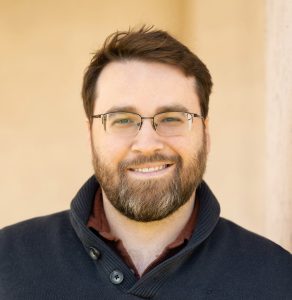
“If you’re coming into a project with an ego — like, “I know what’s going to work” — then it blocks off the opportunity for learning,” says Nathan Jones, Quiet Owl’s director of marketing operations, who graduated from MIU in 2007 with a BA in Physiology and Health. “But if you come into it with an open mind, then there’s so much more growth potential.”
The agency acts as a bridge between companies and consumers. They use cutting-edge technology to help companies listen to consumers and understand what they really want. Then they use this data to tailor the most effective marketing strategy for their clients to resonate with as many potential consumers as possible.
Importantly, they want these relationships between their clients and consumers to be long-term and built on trust. “The nature of life is to grow,” Berkowitz says. “We are a growth agency.”
And they’ve had “explosive growth,” Sinton says. Though it takes more time and a personal touch to cultivate the authentic, enduring relationships they’re after, Sinton cites a Navy Seal slogan to help explain their fast results: “Slow is smooth. Smooth is fast.” In an industry dominated by brashness and algorithms, their gradual, humane, and listening approach has been a “breath of fresh air to clients,” Berkowitz says.
Case studies: Billie Bars, Traditional Medicinals, Overland Sheepskin
Take the case of Billie Bars, a truck bed rack company launched by two friends, Bill and Nate, as a side project in Wyomissing, Pennsylvania. Bill and Nate asked Quiet Owl to tailor their digital marketing strategy. A self-funded company, they needed to turn a profit fast, and marketing budgets were tight.
Quiet Owl first helped Bill and Nate determine an efficient ad budget. Then, on a shoe-string budget, Quiet Owl directed Billie Bars on what content to film for their audience and turned the raw footage into long-form video ads on Facebook and Instagram. Paid social media became the biggest growth driver in year one.
The next step was ramping up Google ads. Here, Quiet Owl proposed an educated but bold and risky strategy: triple the Google budget for six weeks.
It paid off. The company’s return on ad spend (ROAS) increased 18%, and Google got enough data to optimize their marketing strategy.
The company was growing, and fast. In the first year, they experienced 5x revenue growth, and in their second year, they were operating at 64% greater efficiency. Bill and Nate’s gratitude speaks volumes: “Throughout our journey, Quiet Owl has been the flashlight in the proverbial digital cave, shining light where we need it, and keeping us on path. Love ’em!”
And Quiet Owl doesn’t hoot for whoever. They choose clients selectively.
Why? “Every time we’ve compromised our values, we’ve regretted it,” Sinton says.
They’re looking for companies with a long-term vision for what they’re creating and seeking to contribute to society. Many have turned out to be companies that get people outside into nature. They’ve created a team culture of avid hikers, backpackers, surfers, and campers, finding that companies in the outdoor/adventure space have a greater need for their services. “We’re using the screen to get people off screens,” Berkowitz chuckles.
Breeo, a company that pioneered the first smokeless wood-burning fire pit and seeks to provide the “ultimate campfire experience,” has enjoyed 20x growth since Quiet Owl took charge of their digital marketing.
Other clients include Sea to Summit, a purveyor of outdoor adventure gear; Santa Barbara Aquatics; JumpSport, a manufacturer of fitness trampolines; Yellow Dog Flyfishing; and Rovr outdoor coolers.
Their most recognizable client is the wildly popular tea company, Traditional Medicinals.
In addition to e-commerce brands, Quiet Owl also supports B2B and software companies.
“They assisted us in developing the right tracking and measurements so that we could understand the performance of our ad budget. It has contributed massively to our year-over-year growth in recurring revenue.”
— Barry Kuk, CTO of Netstock
Netstock, one of the B2B software companies that Quiet Owl represented, has seen 400% revenue growth in their years working together. “Before spending our hard-earned money on ads, the Quiet Owl Team took the time to really understand our business,” said CTO Barry Kuk. “They assisted us in developing the right tracking and measurements so that we could understand the performance of our ad budget. This methodology resulted in a tight feedback loop where changes were tested continuously. It has contributed massively to our year-over-year growth in recurring revenue.”
Fairfield’s own Overland Sheepskin Company has been on a nine-year journey with David Sinton, and this relationship laid the groundwork for Quiet Owl’s founding. In fact, its “listen-first” and “test-and-learn” philosophy was forged during this lucrative partnership, which turned a “thriving brick-and-mortar brand into a digital powerhouse.”
The list goes on, and there are too many stories to insert here, but if you are interested, you can find their client list on their website.
A long history
Sinton and Berkowitz met each other in 8th grade at Maharishi School, after Sinton’s family moved to Fairfield from South Africa. Though they played on the tennis team together, they weren’t all that close, and Berkowitz “never had the remotest thought that [they] would ever work together.” Now they have an “incredible dynamic” and are building a company where people can truly develop their careers even without prior marketing experience.
“The MIU business program focuses on entrepreneurship, and so all the things they talked about, now I’m finally living it.”
— Jesse Berkowitz
Berkowitz graduated top of his class at MIU, where he majored in business and then did the MBA program. He says the degree prepared him exceptionally well for the challenges of starting a business. “This has been the best chance, eighteen years later, to experience firsthand everything I learned,” Berkowitz says. “The MIU business program focuses on entrepreneurship, and so all the things they talked about, now I’m finally living it.” After all these years, he vividly remembers the lessons he learned on the MIU campus, less than a mile down the street from Quiet Owl’s headquarters.
“MIU changed my worldview and set me up for success in life,” Sinton says. “I took art classes that taught me how to really look at my surroundings. Physics classes that changed my understanding of how reality works. And long deep meditations and the development of self-awareness that could tie it all together.”
Supportive working environment
“Outer depends on inner,” Sinton says. His personal mission for Quiet Owl — a mission he values far more than making money — is to “facilitate the development and growth of all the individuals who come to work here.”
“We’ve created an environment that’s very open, trusting, comfortable, and balanced,” Berkowitz says, “a supportive environment, not cutthroat, corporate, or bureaucratic. Work hard by day and then . . . you get to go to the Dome!”

“Any good job involves a healthy balance of challenge and support,” Jones says. “We strike a good balance here. Our field is quite challenging always changing. You don’t feel bored, you feel a sense of reward, of contributing and providing value, but not so much that you get stressed out.”
Quiet Owl “is definitely unlike other work environments I’ve been in,” Jones adds. “People get along well with each other. We consistently get that feedback, and we’ve been able to maintain that culture.”
Every employee at Quiet Owl plays a significant role in decision making, both in how the company functions and how they want their careers to progress.
Every employee at Quiet Owl plays a significant role in decision making, both in how the company functions and how they want their careers to progress.
For example, everybody at Quiet Owl created three-year plans for themselves this year, outlining what they wanted their individual futures to look like. Sinton and Berkowitz ask their employees, “What are your goals?” and then help them achieve them, whether they want to be a project manager or a tech specialist or a marketing whiz.
“We value regular team huddles, where we’re very open about what’s going on, the possibilities we’re facing, why we made certain decisions. We’re involving people so that they feel a part of our journey as a company instead of ‘here is your job, do what you’re told,’” Berkowitz says. They also do regular “walk and talks” to ensure they’re having individual conversations with every team member. They get together periodically for dinner after work and take company bike rides.
After a vote with the employees, the company chose to prioritize offering extended paid vacation and holidays, more than is typical — and they actively encourage their employees to use it.
And though most employees are meditators, Quiet Owl will pay half of the course fee for any employee who wishes to learn the Transcendental Meditation technique.
Qualifications? What have you got?
What kinds of people is Quiet Owl looking to hire in their quest to expand?
“We hire people with little to no experience in the field, and then we offer whatever training we can in career development, hoping people will stay with us as long they like,” Jones says.
There can be a lot of preconceptions and misunderstandings about what digital marketing is, he says. “But as long as people are committed to their career development, we’re there to support them in that journey. People are often surprised at the skill sets we’re able to put to use, and the field is broad enough that we’re able to find a home for a wide variety of skills.”
Growth mindset
Berkowitz was the salutatorian in MIU’s 2003 graduating class. In his speech, he said his goal was to build businesses in Fairfield that could help support the community in his cherished hometown.
He views this growing company as a fulfillment of that dream, and he is thrilled to be doing it with David Sinton. “David is a brilliant guy — just a great guy,” Berkowitz says. “He is very giving and knowledgeable.”
They share a vision of growth. “Many agencies top out at our size, between ten and fifteen people, and that’s fine,” Berkowitz says. “But we both want to create something bigger than that, and that often depends on the founders.”
Sinton agrees. They plan to build the company to between 30 and 50 employees. If this opportunity speaks to you, Fairfield’s Quiet Owl is on the prowl for help!
This fall, with the launch of its new online bachelor’s specialization in Positive Psychology and Consciousness, MIU will become one of the country’s few schools offering positive psychology at the bachelor’s level. It will also provide the field with the theoretical foundation it has lacked.
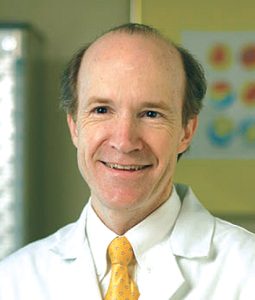
Positive Psychology is the study of “what makes life worth living,” according to Fred Travis, chair of MIU’s Maharishi Vedic Science department and chief architect of the new program. It aims to cultivate positive experiences, positive character strengths, and positive relationships.
Travis was inspired to create this program in response to his students’ requests for a more direct connection between Maharishi Vedic Science and modern psychology.
Positive Psychology explores such questions as who am I? What is my purpose? Do I have agency? What is the meaning of life? How can I find fulfillment and help others along the way? Often overlooked, such questions call for wisdom, not the acquisition of information — a whole individual, not an amalgam of isolated skills.
The new Positive Psychology program will strive to address these by synthesizing modern psychological perspectives with the knowledge of consciousness in Maharishi Vedic Science.
Simultaneously, the it will provide practical tools and strategies to help students find their own unique answers. Since positive outer development is based on “experiencing our inner universal nature,” Dr. Travis says, the program is grounded in the experience and understanding of higher states of consciousness.
Dr. Travis will also design and teach the introductory course. A leading neuroscientist in the field of brain functioning and higher human development, Travis interweaves meditation, brainwave patterns, and cognitive functioning in his far-reaching work.
Fulfilling the lack — a proper theoretical foundation
Travis identifies a fundamental lack in Positive Psychology that hinders it from reaching its full potential. This lack, he believes, can be filled with the integration of Maharishi Vedic Science (MVS).

“Positive Psychology is a collection of research findings,” he says. “It lacks a theoretical foundation. MVS adds the theoretical foundation that explains these research findings: the importance of self-esteem and an evidence-based means to develop it, i.e., TM practice; how our perspective determines our reality and how our perspective changes as consciousness grows; and the importance of happiness. The natural tendency of life is the expansion of happiness.”
Also missing in Positive Psychology is the importance of a healthy body.
“The quality of functioning of the mind and body are synergistic,” Travis says. “We need a healthy body to take us through life to higher states of consciousness.”
This first course will delve into the intersection of mind and body, examining the cycle of how thoughts and emotions affect our physical health while physical health, in turn, affects our thoughts and emotions — all undergirded by how growth of higher states of consciousness supports overall physical, mental, and emotional health.
The Positive Psychology program represents a significant addition to the MIU curriculum. Nationwide, 90% of adults say mental health is a crisis in the US, which seems reflected at the societal level.
“Education can lead us to a better future,” Dr. Travis says, “especially if it focuses on developing purposeful, cooperative, and happy individuals who know thyself. That is the aim of Positive Psychology.”
Is it possible that groups of people sitting quietly with their eyes closed can reduce the homicide rate across the United States? Or reduce the rate at which people die from recreational drugs?
This is just what two recently published, peer-reviewed scientific studies have found, adding to the ever-growing body of evidence supporting the phenomenon known as the Maharishi Effect — the widespread positive changes that occur in society when the portion of a population practicing the Transcendental Meditation (TM) technique individually, or the TM and advanced TM-Sidhi program in groups, reaches certain thresholds.
Both studies focused on the results of a large group of TM and TM-Sidhi program experts practicing these programs twice daly in MIU”s two large Golden Domes. Between 2007 and 2010, the size of this group approached or exceeded 2,000 people, or roughly the square root of 1% of the US population — the size necessary, theoretically, to create a “tipping point,” measurably reversing negative trends.
Before 2007, both the homicide rate and drug fatality rate had been increasing. But during this four-year period, the homicide rate nationwide dropped almost 20%, or about 27,369 fewer deaths during the study period.
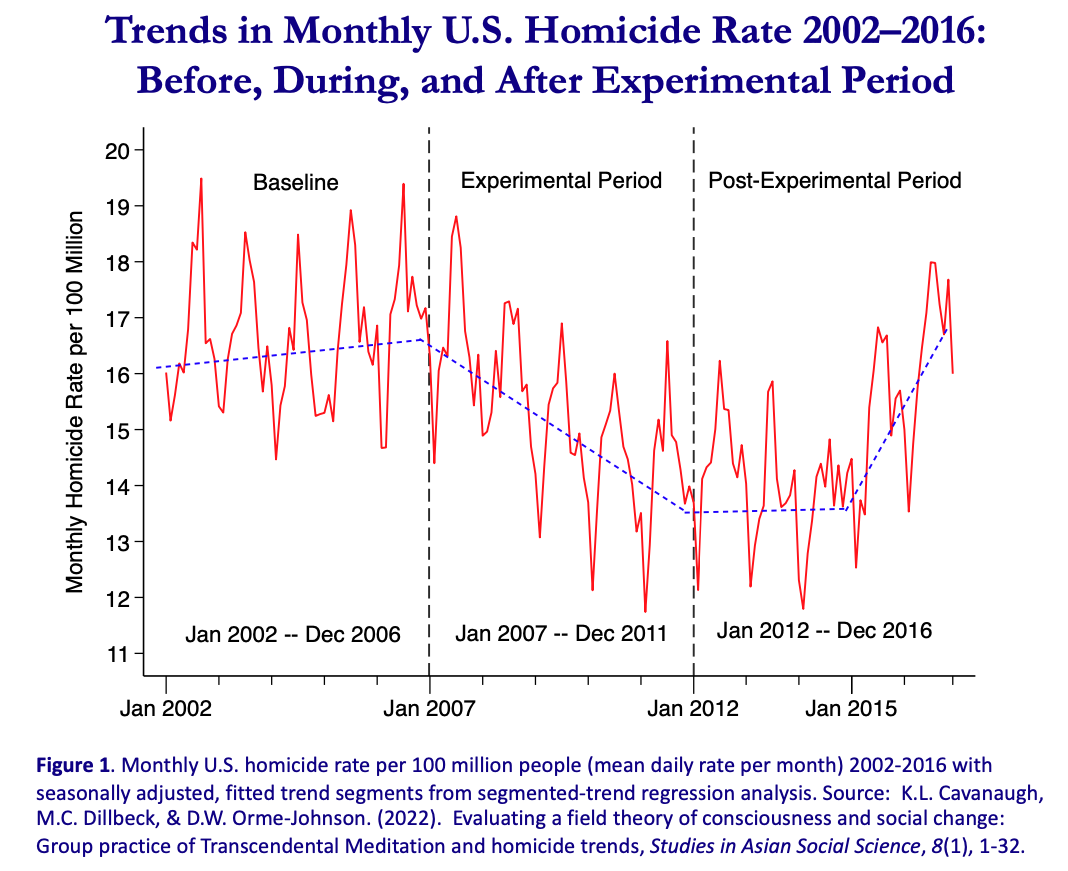
Similarly, the drug fatality rate plummeted more than 35%, or 86,309 fewer drug-related deaths.
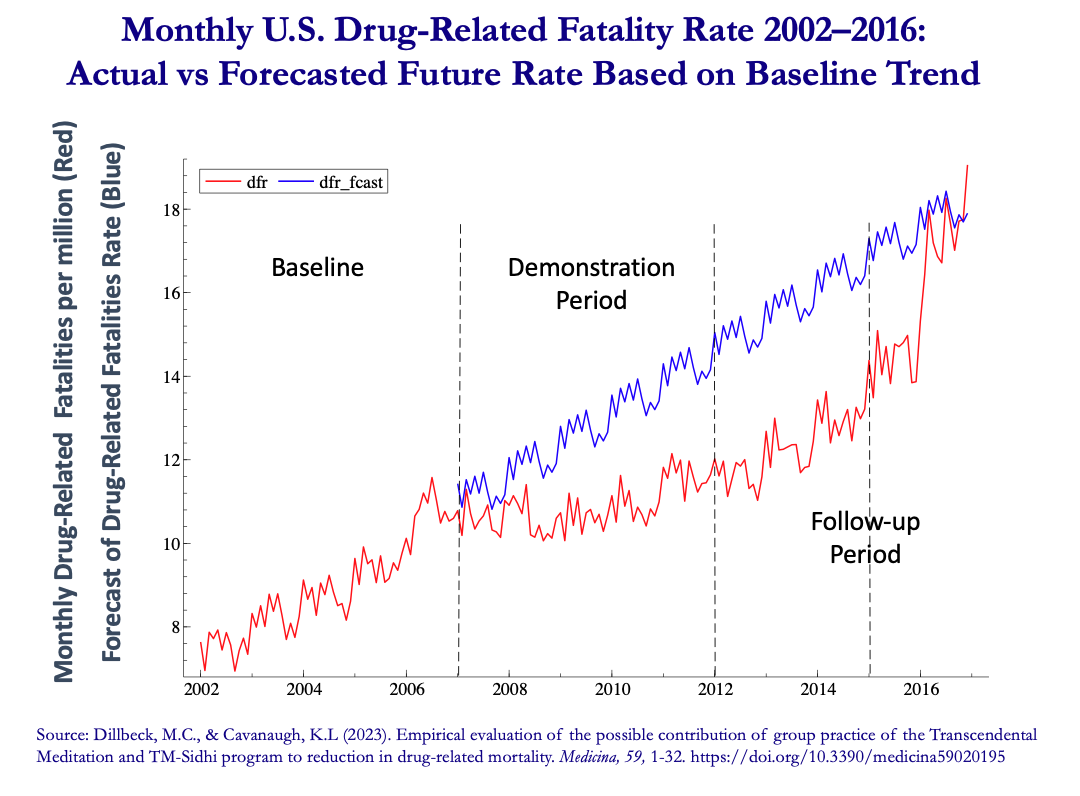
After 2010, as funding for the group declined, so did the size of the group, falling below the critical threshold. After this happened, the homicide rate and the drug fatality rate both began increasing, slowly at first, and then drastically, as both charts show.
These findings raise questions.
Where did the data come from?
As in all the research studies on the Maharishi Effect, the data came from publicly available statistics.
Could something else have caused these results?
No other factor could explain the dramatic declines revealed in the statistics.
Many social forces contribute to the homicide and drug fatality rates. Homicide rates, for example, can be influenced by changes in the economy, community policing, community demographics, incarceration rates, even changes in temperature. The drug fatality rate can also be affected by changes in the economy, temperature, and opioid prescription rates. Pre-existing trends might also have had an influence.
But advanced statistical tools enable scientists to isolate the effects of these other factors and determine what influence, if any, they had on the homicide and drug fatality rates, and no other variable exerted a significant influence.
Could these results have been due to chance?
The odds that the drop in homicide rate happened randomly were less than one in ten billion, according to statistical analysis. For drug fatalities, it was less than one in one billion. In other words, the chances that these effects happened purely on their own were practically zero.
This analysis gives strong confidence that the observed results were due to the TM and TM-Sidhi program group in Iowa.
How is this possible?
In the theory behind the Maharishi Effect, a single all-pervading unified field of consciousness underlies all of nature, and human beings have access to this field in their own silent awareness. When people experience this field through their Transcendental Meditation practice, they “enliven” it.
Because the unified field is immaterial and all-pervading, unbound by space and time, enlivening this field anywhere enlivens it everywhere — nothing is excluded from this effect. Stimulating pure consciousness through TM and TM-Sidhi program practice radiates an influence of coherence and harmony, reverberating far beyond the confines of the individual mind and body.
Maharishi had predicted the effect as early as 1960, provided the specific meditation techniques to bring it about, and encouraged scientific research on it. Now 50 experiments and 28 peer-reviewed published studies corroborate the phenomenon.
The problem is worsening
Drug fatalities are currently skyrocketing in the US. According to the CDC, drug deaths rose to more than 100,000 per year in 2021 — an increase of 28.5% over the prior year. (By comparison, 55,000 people died in the entire Vietnam war over ten years.) And drugs have been the leading cause of death for young Americans since 2019.
This is largely due to the pernicious spread of fentanyl in this country, fueled by China’s illicit manufacture and distribution network. Fentanyl, 50 to 100 times more potent than morphine, is an inexpensive way to increase the power of the drugs it is combined with; unsuspecting users then ingest it via recreational drugs or painkillers.
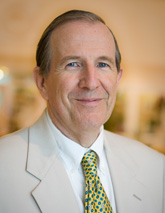
Fentanyl became an issue only after 2010, when the size of the group declined, says Dr. Ken Cavanaugh, one of the authors of the studies and professor emeritus of applied statistics at MIU. But it’s precisely because of that decline, he argues, that the US became vulnerable to such an epidemic.
“Everywhere you look — homicide rate, the crime rate — all these indicators of social stress have escalated unbelievably since that time,” Cavanaugh said. “That’s what happens when people’s behavior is no longer being influenced by that coherence being generated from the meditation group. Their whole behavior changes, their whole way of thinking, their whole level of suffering.”
Convincing governments to provide support
The aim of this research is simple, Cavanaugh explains— to use empirical evidence to convince governments of the urgent societal demand for the TM Sidhi program.
“We want to convince governments to provide support for these programs,” he says. “To do that, you have to convince the scientists who governments rely on for advice.”
Though this has proven to be an uphill battle, Dr. Cavanaugh remains unfazed. He understands the gradual nature of scientific progress and how difficult it is for science to shift to a completely new paradigm.
“Probably 99% of scientists out there fall into the physicalist or materialist paradigm,” he says, referring to the belief that inert matter is the basic stuff of the universe. “Maharishi’s perspective, the Vedic perspective, is that consciousness is fundamental, not matter. We’re now shifting to a radically different paradigm. When you’re doing research in a new paradigm, it’s viewed as unscientific or worthless by those who adhere to the old paradigm. So it just has to be explained as clearly as possible, and people have to be open to hearing it.”
“This is such a fantastic scientific discovery”
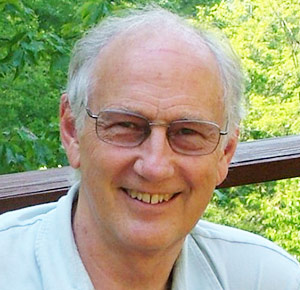
One of the investigators in the homicide study was David Orme-Johnson, who has conducted many pioneering studies on the Maharishi Effect as well as on the Transcendental Meditation technique itself.
“What are considered the greatest scientific discoveries of all time?” Dr. Orme-Johnson asks. “Gravity, electricity, the theory of evolution, the theory of relativity, Big Bang theory, and so on. All of these things have been fantastic in giving humanity the ability to do more, be healthier, and understand nature more deeply.
“But in my opinion, there is nothing as great as this simple discovery, the Maharishi Effect, this simple thing that can change everything, almost overnight, in a positive direction. This is such a fantastic scientific discovery.”
REFERENCES
The study on homicide rates, entitled “Evaluating a Field Theory of Consciousness and Social Change: Group Practice of Transcendental Meditation and Homicide Trends,” was published in August 2022 in the journal Studies in Asian Social Science and authored by the research team of Kenneth Cavanaugh, Michael Dillbeck, David W. Orme-Johnson.
The study on drug fatality rates, “Empirical Evaluation of the Possible Contribution of Group Practice of the Transcendental Meditation and TM-Sidhi Program to Reduction in Drug-Related Mortality,” was published in the journal Medicina and was authored by Dillbeck and Cavanaugh.
Cavanaugh is professor emeritus of applied statistics at MIU, Orme-Johnson is past chair of the MIU department of psychology, and Dillbeck is past professor of psychology and a member of the MIU Board of Trustees.
Between March and July 2023, Dr. Anil Maheshwari published four more books, bringing his total to 16 books altogether. He has also published more than 40 papers and given more than 40 presentations at conferences and symposia.
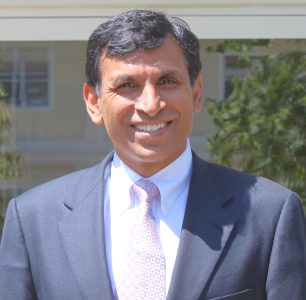
His most recent tranche of books includes a two-volume textbook, Consciousness-Based Leadership and Management. The book has an interesting origin story that goes back to a 2016 conference in Los Angeles.
The conference was organized by the Academy of Management, the world’s largest association for management professors. Maheshwari is a distinguished member, and this year, he was promoted to serve as chair of the Management, Spirituality, and Religion division of the academy.
At the conference, Maheshwari came across an MIT professor who was advocating for his “U Theory” — a 7-step process to go from brokenness to greater connectedness. Maheshwari liked the idea, but told him it could be done faster.
He asked the professor: What if we could go down to the subtlest level and come back up again in one swoop, like a V instead of a U?
The professor thought for a few seconds, then responded, “Sure!”
Just like that, Maheshwari’s “V Theory” was born. He calls it a “reformulation” of Maharishi’s bubble diagram — instead of a purely vertical stroke, there is a movement from left to right. You return from the inward stroke “a little bit ahead.”
From 2016 to 2018, Maheshwari talked up his new theory at various conferences. “I pitch for transcendence,” he says. “Transcendence is the key. I tell them, if you want to bring everybody together to solve problems, you have to transcend your specialties.” His peers at the Academy responded with enthusiastic support, Maheshwari said — “Everybody gets it!”
Maheshwari organizes online world peace conference
This encouraged Maheshwari to organize a world peace conference in Fairfield. Plans changed in early 2020 with the pandemic, and he switched to an online conference instead.
With no outside funding, Maheshwari and a small group of volunteers set to work, creating brochures and a website, posting on social media, sifting through published research, and inviting keynote speakers.
Keynote speakers included Dr. Tony Nader, Dr. John Hagelin, Dr. Robert Quinn, Dr. Subhash Kak, and Dr. David Orme-Johnson. Themes included spirituality and religion, shared prosperity through enlightened business practices, and development of collective consciousness for world peace.
In May 2021, the International Conference on Consciousness-Based Leadership and Management was held on Zoom. More than 90 speakers from diverse fields came together to lay out “a path to flourishing humanity.” It attracted almost 1,200 attendees, from 400 cities and towns around the world. Some 85% of the people were not associated with MIU.
That three-day event was a big success, reminding many MIU attendees of the SCI conferences of 1971-72 at Amherst University, which gave rise to Maharishi International University. Maheshwari was pleased that the conference evoked feelings of joy and nostalgia in attendees who were present for both.
Two-volume textbook
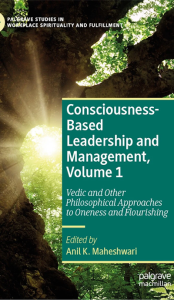
This brings us to the two-volume textbook. Instead of releasing a transcript of the conference, Maheshwari decided to edit and build on the scholarly journals the presentations were based on, letting the videos stand on their own, while developing a catalog of 30 scholarly papers to expound on the topics discussed. “The quality of the papers is phenomenal,” he said. “High level [knowledge], high quality content. Breadth. Very, very joyful.”
Three main principles arose from the conference, becoming the overarching thread for his book: Consciousness is primary, compassion is essential, and developing yourself is the first priority.
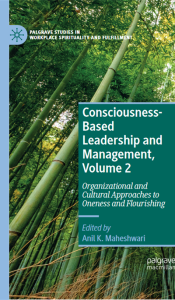
His next book follows on his #1 global best-seller, Data Analytics Made Accessible. Data Analytics 2E, the second edition of his popular textbook, includes topical issues like Data Privacy, Artificial Intelligence, and Data Wrangling in a concise and conversational style. For busy readers, this edition includes a summary that condenses all the knowledge into 50 main points.
The textbook is application oriented. While it primarily caters to computer science and IT students, engineering and management students should also find it useful. Those seeking an introduction to data science can find simple tutorials on data mining techniques using Python, R, and Weka.
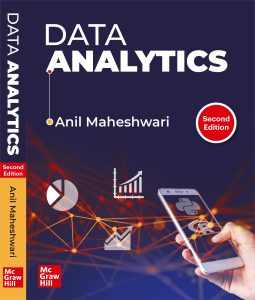
Book on social entrepreneurship
There’s still one more book to mention, titled Social Entrepreneurship, which Maheshwari co-authored with Dr. Nisha Pandey from India. This book tells the stories of different business groups in various industries to explore social entrepreneurship and sustainable business models. It focuses on individuals who recognize problems and create innovative solutions, aiming to transform society through their conscientious business practices. Social Entrepreneurship is an elusively dynamic topic, but this book does its best to provide a “thorough narrative” of the evolving field.
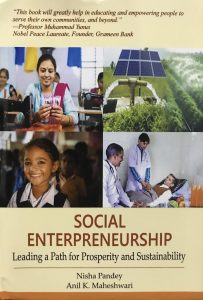
Maheshwari has now published 16 books, and he tells me there could be more. A deep purpose undergirds his writing: to help humanity arm itself with wisdom, so we can positively harness the power surrounding us, rather than continue to be exploited by it. “The technology is here,” he says, but our survival depends on how we choose to use it.
This is an important key to his success. Maheshwari distills complex, disparate concepts down to a profound and simple essence.
Towards the end of our interview, I asked him how data science, a seemingly mechanical subject, can incorporate a consciousness-based lens. He looked to his wife, a top-notch chef, and asked her the secret to making a quality meal. “Your heart has to be into it,” she replied — and that, he said, is true in every field.
